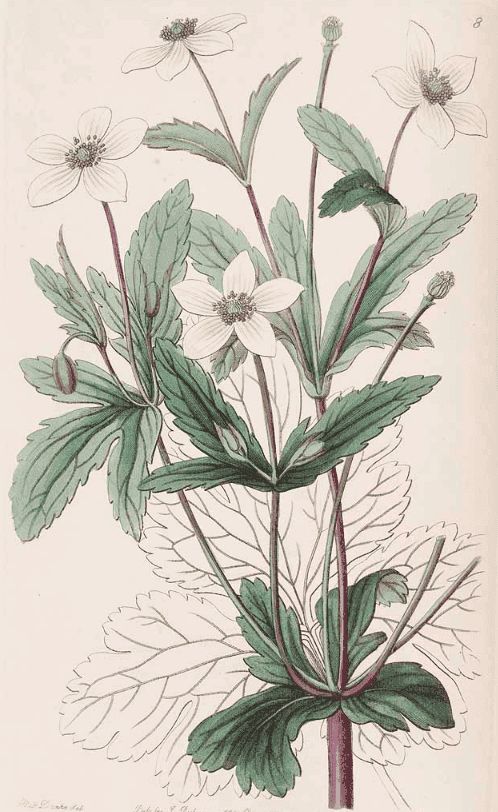Anemone rivularis, Srub ka སྲུབ་ཀ
River Anemone, Brooklet AnemoneSrub ka, Sngo srub (Tibetan)
Hu Zhang Cao (TCM)
 Anemone rivularis
Anemone rivularisEdwards’s Botanical Register, vol. 28 (1842)
Botanical name:
Anemone rivularis (syn. A. dubia, A. geraniifolia, A. hispida, A. wightiana)
Parts used:
Root; whole plant
Root is used in TCM; Seed is used in Tibet
Temperature & Taste:
Warm, dry. Bitter (Cool in Chinese Medicine)
Uses:
1. Benefits the Stomach, Promotes Digestion:
-Weakness of the Stomach; Indigestion
-Stomachache (Tibet, TCM)
-Seed is regarded as restoring digestive heat (Tibet)
2. Clears Wind-Heat, Resists Poison:
-Fever, Colds, Cough
-Epidemic diseases, Mumps; Malaria
-pain and swelling of the Throat (TCM)
-Snake Bite (Seed, Tibet)
-Sores; Abscesses, suppuration
3. Clears Damp, Disperses Swelling, Eases Pain:
-accumulation of serous fluids (Damp); ‘yellow water disease’
-damp-heat Jaundice (TCM)
-Edema, fluid swelling
-Wind-Damp pain (TCM)
-Tumors (root, fruit)
4. Moves the Blood, Stops Bleeding:
-Wounds, Trauma, Bruising (Tibet, TCM; Root, seed, herb)
5. Externally:
-earache, toothache (Tibet, TCM)
-applied to Wounds
-root paste applied to Headache
Dose:
Powder: 1–3 grams
Substitutes:
1. Potentilla spp. is used as a substitute in Buryat.
2. Russian sources have listed Clematis hexapetala for Srub ka. This is probably a local substitute used by Tibetans in Russia.
Main Combinations:
Major Formulas:
Cowrie Ash 8 (‘Gron thal brgyad pa)
Cautions:
None noted
